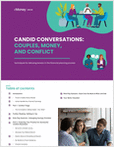Several years ago James Finneran, president of Finneran Senior Resource Group in Gig Harbor, Wash., began sending an e-newsletter to his computer-savvy clients. Today, he uses it to communicate regularly with more than 300 subscribers.
In addition to providing him with a vehicle for sharing information about a variety of subjects of interest to his senior clientele, the e-newsletter gives Finneran an efficient method of contacting specific segments of the list. “I give a lot of estate planning seminars,” he says, “and the e-newsletter gives me another way to communicate with my customers about the event. Prior to a seminar I always send a special, customized e-newsletter to everyone in the event’s ZIP code, letting them know that I’ll be speaking in their area and inviting them to attend.”
Much like a print newsletter, an e-newsletter gives advisors a way to keep in touch with current and prospective customers. The format allows an advisor to share news, present in-depth information and address a variety of related issues. Unlike with print newsletters, however, postage and printing expenses are nonexistent. An e-newsletter is also fast, allowing an advisor to quickly respond to breaking news or trends. Conservation-minded advisors appreciate the fact that e-newsletters don’t waste trees or end up in landfills.
E-mailed newsletters have their own set of challenges, however.
“People don’t want to be spammed,” Finneran says. “You have to build trust before most people are willing to give you their e-mail addresses.”
Even requested e-newsletters can sometimes be intercepted by spam filters, or an e-mail might not get the same attention from some readers that a mailed piece would simply due to its lack of physical presence. While more seniors are becoming computer savvy, some may, for one reason or another, just prefer to read a paper newsletter. Finally, vision problems could limit some seniors who are better served by printed materials.
Should an e-newsletter be part of your marketing plan? Here are some reasons why this promotional tool may be a good fit. An e-newsletter:
- helps you keep in touch with your prospects.
- can help develop interest in new products and services.
- gives new prospects visiting your site a reason to provide their e-mail address.
- allows you to respond quickly to related news and trends.
- allows you to communicate efficiently with a large group of people.
- keeps your name in front of your customers.
- if done well, is perceived as an added value by your customers.
Before you start
Here are some of the decisions you’ll want to make as you’re planning your e-newsletter:
- Niche: The best newsletters don’t try to be all things to all people. Specializing in a particular market niche will allow you to tailor the information to your audience, which in turn increases readership.
- Frequency: Most experts agree that the newsletter should come out at least on a quarterly basis. Most commonly, a newsletter is monthly. Increasing frequency works for a shorter newsletter – a “tip of the week,” for instance – but if you e-mail too frequently, readers may get annoyed.
- Audience: Will the newsletter be geared primarily to your existing customers, new clients or both? Consider the demographics of your list; is the readership primarily seniors? Baby boomers? Knowing who your audience is will help you tailor the editorial content to their needs and interests.
Content
The best newsletters offer rich content that includes ideas and information that people need. If your newsletter is all about your products, readers will quickly tire of it and see it as just a thinly veiled advertisement. Instead, offer great content and let the information be the star, creating an environment around which you can mention products and services when appropriate.
Where will you get this great content?
- Write it yourself. If you’re a professional writer and you have the discipline to meet self-imposed deadlines, this option gives you full control over content and timing. It’s still a good idea to have your work professionally edited and proofread before sending it.
- Hire a freelance writer. This option shifts the deadline pressure to a professional and may be best for busy advisors who still want to control the content of the message but let someone else do the actual writing. You can often find good contract writers by looking at the masthead of trade magazines and local business publications; freelancers are usually listed as contributing writers. You also can find qualified freelance writers on professional Web sites like the American Society of Journalists and Authors (asja.org).
- Purchase the content. Fred Jurewicz, CSA, owner of Fred Jurewicz Financial (fjfinancial.com) in Eden Prairie, Minn., mails his clients a quarterly print newsletter that he gets from Integrated Concepts Group (icgnews.com). This company and others like it specialize in publishing marketing newsletters and brochures for clients and prospects of financial service providers. Jurewicz mails the print version, but ICG and others will also provide e-news content. Most pre-formatted newsletters also have a designated space for personalized content.
Compelling subject line
The most important element that determines whether your e-newsletter gets opened or deleted is its subject line. If your subject line is self-serving or sounds like spam, odds are the newsletter will never be viewed and all your work will be in vain. Accordingly, it pays to spend time developing a provocative subject line that includes a key benefit or creates curiosity.








 June 01, 2006 at 08:00 PM
June 01, 2006 at 08:00 PM










